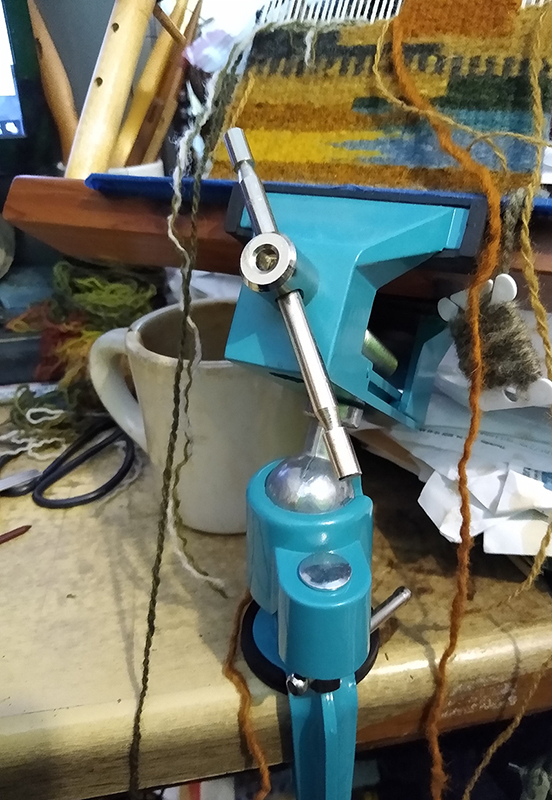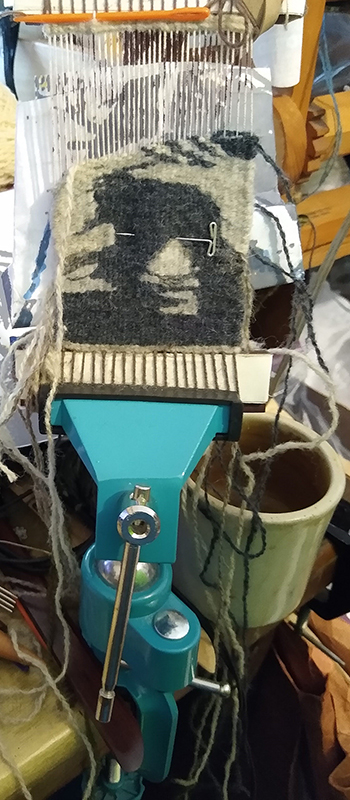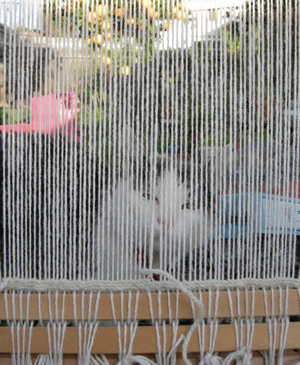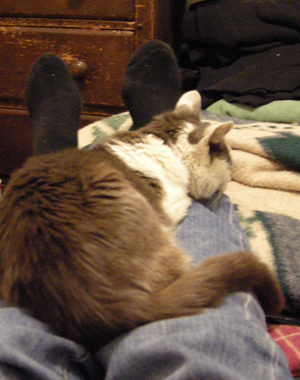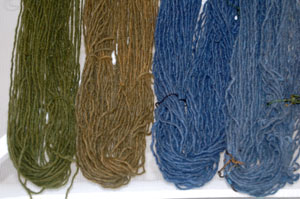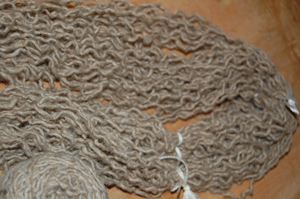I’m not sure how other people spend their weekends. Recently I was under the loom, sitting on the floor with pliers and such making some adjustments. All this bringing back childhood memories of holding a flashlight for my father while he worked on the car.

I’ve blogged in the past about upgrading my LeClerc Minerva loom from 4- to 8-harnesses. Everything fit correctly but the 8-harnesses seemed to be floating or not dropping down as smoothly as 4-harnesses. I tried adding some weights to the harnesses but this wasn’t really a satisfactory solution.

In all fairness the original loom was build perhaps late-1960’s and the new parts were ordered in this century – something like a 40+ year interval. So this is not a complaint. In fact I’m grateful that LeClerc continues to sell parts for models no longer in production, continues to keep documentation available (online) and are generally nice people.

It finally dawned on me that over the intervening years there might be minute differences in the size of the Lams – the things that connect the jack-harnesses and the treadles. Link to Minerva Loom parts. And that the older Lams might have accumulated some slight warp which would also contribute to the problem.
I unhooked the Lams from the harnesses and the treadles and observed that there was a slight difference. By alternating the Lams – one old – one new – one old, etc – the harnesses drop smoothly (again), and I think that the floating harness problem is solved.

Lams unmixed – slight difference.
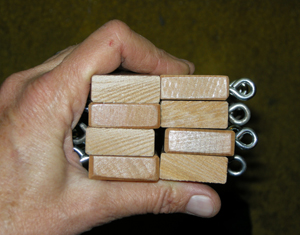
Mixed up the fill the spaces more evenly.
Powered by ScribeFire.
